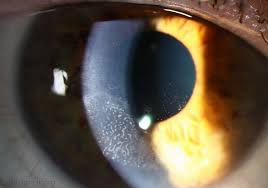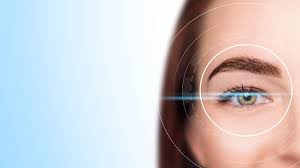Table of Contents
ToggleCongratulations on choosing to enhance your vision with LASIK eye surgery!
However, as with any surgical procedure, there are post-operative guidelines to follow to ensure a smooth recovery. One common question among LASIK patients, especially those who love movies, is whether it’s safe to watch a movie after the procedure.
This blog aims to provide detailed, researched, and informative content to help LASIK patients and movie enthusiasts understand when and how they can enjoy their favourite films post-surgery.
Understanding LASIK and the Initial Recovery Period
LASIK, or Laser-Assisted In Situ Keratomileusis, is a refractive eye surgery that corrects vision problems such as myopia, hyperopia, and astigmatism.
The First 24-48 Hours
The first 24 to 48 hours after LASIK surgery are critical for your recovery. During this period, your eyes will be particularly sensitive, and you will need to follow specific guidelines to avoid complications:
- Rest Your Eyes: Your eyes need time to heal, and resting them is crucial. Avoid activities that can strain your eyes, such as reading, using a computer, or watching TV.
- Avoid Bright Lights: Your eyes will be more sensitive to light immediately after surgery. Use sunglasses to protect them from bright lights and reduce discomfort.
- No Rubbing: Rubbing your eyes can displace the corneal flap created during the surgery, leading to complications. If your eyes feel itchy or dry, use the prescribed eye drops.
When Is It Safe to Watch a Movie?
While the initial recovery period requires strict adherence to guidelines, you may wonder when it’s safe to indulge in your love for movies. Here are a few general recommendations:
Day 1 to Day 3
During the first three days post-surgery, it’s best to avoid watching movies altogether. Your eyes need to rest, and activities that require focusing on a screen can strain your eyes and delay healing. Follow your doctor’s post-operative instructions carefully during this period.
Day 4 to Day 7
By the fourth day, you may feel more comfortable and less sensitive to light. You can start watching movies, but with caution. Here are some tips to keep in mind:
- Limit Screen Time: Watch movies in short intervals, giving your eyes frequent breaks. The 20-20-20 rule is an excellent guideline: every 20 minutes, take a 20-second break and focus on something 20 feet away.
- Use Lubricating Eye Drops: Your doctor will likely prescribe lubricating eye drops to keep your eyes moist. Use them as directed, especially if you feel dryness or discomfort while watching a movie.
- Adjust the Lighting: Ensure the room is well-lit but not too bright. Avoid watching movies in complete darkness, as it can increase eye strain.
Week 2 and Beyond
By the second week, most patients experience significant improvement in comfort and vision. You can gradually increase your screen time, but continue to listen to your eyes. Should you experience any discomfort, please take a break.
Choosing the Right Environment and Setup
Creating a comfortable environment for watching movies can make a significant difference in your post-LASIK experience. Here are some tips to optimize your movie-watching setup:
Screen Distance and Size
- Maintain a Safe Distance: Sit at a distance where the screen doesn’t appear too bright or cause strain. Generally, the recommended distance is about five times the width of the screen.
- Use a Medium to Large Screen: Watching on a larger screen can be less straining than squinting at a smaller one.
Lighting
- Ambient Lighting: Soft, ambient lighting can reduce glare and make it easier on your eyes. Avoid direct light sources that reflect off the screen.
- Adjust Screen Brightness: Lower the brightness of your screen to match the ambient lighting. Too much contrast between the screen and the surrounding light can cause strain.
Seating Position
- Maintain Good Posture: Sit in a comfortable chair that supports good posture. Poor seating can lead to neck and back strain, which can indirectly affect your eye comfort.
- Eye Level: Ensure the screen is positioned at eye level to prevent tilting your head up or down, which can strain your neck and eyes.
The Role of Eye Drops and Medications
Your doctor will prescribe eye drops and medications to aid in your recovery. Understanding their role and using them correctly is essential for a smooth recovery:
Lubricating Eye Drops
- Moisture Balance: These drops keep your eyes hydrated and comfortable. Use them as directed, especially before and after watching movies to prevent dryness.
- Regular Use: Even if you don’t feel dry, it’s crucial to use the drops regularly as a preventive measure.
Prescription Drops
- Follow Instructions: Use any prescribed drops, such as antibiotics or anti-inflammatory medications, as instructed by your doctor. These drops help prevent infections and reduce inflammation.
- Timely Application: Ensure you apply the drops at the recommended intervals. Set reminders to ensure you never miss a dose.
Listening to Your Eyes
Everyone’s recovery timeline can vary, and it’s essential to listen to your eyes and body. Here are some signs to watch for and steps to take if you experience discomfort:
Signs of Strain or Discomfort
- Dryness: If your eyes feel dry or gritty, take a break and use lubricating drops.
- Redness or Pain: Persistent redness or pain should be addressed with your doctor immediately.
- Blurred Vision: Temporary blurriness can occur, but if it persists, consult your doctor.
Taking Breaks
- Frequent Breaks: Regularly take breaks to rest your eyes. The 20-20-20 rule is an effective way to ensure you don’t overstrain your eyes.
- Alternative Activities: Engage in activities that don’t require intense focus, such as listening to music or podcasts.
The Importance of Follow-Up Appointments
Attending follow-up appointments with your eye surgeon is crucial for monitoring your recovery and addressing any concerns. These appointments are crucial for ensuring proper eye healing and offer a chance to address any discomfort or questions you might have.
What to Expect
- Initial Follow-Up: Typically scheduled within 24 to 48 hours after surgery. Your doctor will check your eyes and ensure the healing process is on track.
- Subsequent Appointments: Additional visits may be scheduled over the following weeks and months. These appointments allow your doctor to monitor your progress and make any necessary adjustments to your care plan.
In Closing
While watching a movie after LASIK is possible, it’s essential to follow your doctor’s guidelines and take necessary precautions to ensure a smooth recovery. Rest your eyes in the initial days, gradually reintroduce screen time, and create a comfortable viewing environment. Utilizing lubricating eye drops and attending follow-up appointments will further aid in your recovery.
Are you still unsure or have specific questions about your recovery? Feel free to contact your eye care provider. Your eye health is paramount, and taking these steps will help you enjoy your favourite movies while ensuring a successful LASIK recovery.
Enjoy your new vision and happy movie-watching!













